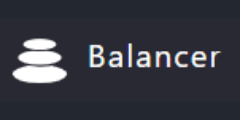What is yield farming? Your best platforms

If you are new to the crypto world and see the name of Yield farming, the first thing you think of is that this is a crypto farm-currency, right?
If so, you are not mistaken at all, because farming is to use your cryptocurrencies to get more cryptocurrency passively, much like watching an orchard blossom.
In this article I will tell you what is crypto yield farming -currency, how you can do it, what are the best platforms for it and what risks you expose yourself to.
What is yield farming?
Yield farming ou cash mining is a type of trade that cryptocurrency investors do to maximize their profits. This “culture” consists of lock your cryptocurrencies in a decentralized application(DeFi) to then collect them with an extra, your reward for HODL.
Contrary to staking, when you do yield farming, the rewards are not in the parts you put to work, but in another.
This type of operation is carried out thanks to contracts smart devices or smart contracts, which are responsible for giving rewards in the form of tokens to users who practice the yield farm. On some occasions, these rewards are also used to obtain more rewards, entering a vicious cycle that is very profitable in the long run.
Origin of yield farming
As with “everything” in the world of cryptocurrencies, the practice of Yield Farming is quite recent, its beginnings only date back to 2017. It was during this time that DeFi applications experienced their greatest tree lately, especially for the rally bullish that was experienced that year.
Many people think that the beginnings of yield farming correspond to the role that COMP, the governance token of the protocol Compound, played in 2019. However, the true predecessors of what we know today as yield agriculture are MakerDAO and its crypto-guaranteed DAI.
If you do not know, the MakerDAO protocol allowed users to offer financial credits with little risk so that they could realize their investments. Therefore, people who have invested in Maker (the native token of MakerDAO), could ensure an attractive return.
This way of passively earning returns by simply keeping a few tokens in a wallet laid the foundation for applications of agricultural yield which will come later. So, what does Compound Protocol have to do with all this?
When Compound launched its governance token at the end of 2019, COMP, its developers wondered how they were going to distribute the tokens. At that point, and without quite knowing what they were going to trigger, they decided to give away the COMP tokens as a reward for providing liquidity to the system, i.e. as an incentive.
In other words, Compound offered COMP rewards for locking specific tokens and cryptocurrencies into the platform's liquidity pools, ring a bell?
It was a real revolution, and since then there are more and more dApps and exchanges decentralized that allow yield farming with cryptocurrencies.
How Yield Farming Works
The operation of Yield farming is relatively simple, but to understand it, one must first become familiar with the concept of exchange AMM. The exchanges conventional , like brokers and other exchanges, bring buyers and sellers together.
So if you wanted to buy Bitcoin on a exchange traditional using Tether(USDT), there must be someone else who wants to exchange their USDT for Bitcoin. It sounds a bit complicated, but in highly liquid markets there is always someone acting as the counterparty.
In one exchange AMM, the figure of the counterparty disappears and, to deal with your operation, it resorts to liquidity pools, from where they obtain the necessary cryptocurrencies for your exchange.
More what is a liquidity pool? These pools are a special type of smart contract which raises funds from thousands of investors. All of this liquidity providers deposit their tokens and crypto-currencies there in exchange for a reward, which generally comes from the commissions paid by the investor to carry out his operation, although this is not always the case.
However, this way of apprehending investments gives rise to other types of operations, such as the subscription of loans, which is also based on this system of liquidity pools.
Right now you might think that all sounds good, but what if there is no liquidity? Well, as you can imagine, if there is no one to provide liquidity to a specific pool, a trade cannot be completed.
The way to know the “health” of a liquidity pool is to look at its total value locked(TVL). As the name suggests, TVL tells you how many cryptocurrencies there are in this type of pool for trading and lending. You can find it expressed in fiat currencies or cryptocurrencies, but it amounts to the same thing.
This value is usually available on the website of the exchange or the decentralized platform you're using, but if you can't find it, you can use a general website like Defi Pulse to see it.
Collateralization of yield farming
Collateralization is the security system that ensures your solvency when you apply for a loan on the blockchain. To understand it in a simpler way, we could say that it is the minimum amount of funds that you must have on the platform in order to be able to borrow money.
If we translate it to real life, it would be like the collateral for the loan. However, in The blockchain, this collateralisation is relative, ie it is expressed as a percentage. This way, if you borrow a stablecoin and use bitcoin as collateral, sometimes bitcoin crashes and you break the warranty.
In the event that this happens, your credit will be liquidated instantly for non-compliance with the agreement. Transferring it in real life would be like the bank keeping your collateral.
But what guarantee are we talking about? Platforms don't want to gamble by giving loans to everyone, so they usually require you to have at least 200% of the amount you want to borrow, but in some cases it can exceed 500%.
For example, if you want to request a $200 crypto credit on a platform with a 200% guarantee, you will need to lock at least $400 of crypto. As you can imagine, entering only $400 is very risky, because if the value of your cryptocurrencies drops to $395, you would violate the agreement.
And yes, I know you're wondering right now, why does someone with over $400 want to borrow $200 and can't use their funds? And the answer is yes, but he has this money in cryptocurrencies, and maybe he does not want to exchange them for another currency to perform a certain operation. Therefore, you can continue to HODL and have more funds to trade.
How much can you earn from cryptocurrency yield farming?
Of course, rewards play an important role in yield farming, and if you are thinking of getting into this market, you want to know how much you can earn.
Each “farm” gives a specific return, and this can be higher or lower depending on the cryptocurrency pair you are trading with. The return is usually given on an annualized basis, and you can find 2 values; APR and APY.
The difference between the two values is that the APY takes compound interest into account, that is, it is the approximate return you would get if you reinvested the profits. Instead, APR is the return you would get if you didn't reinvest the rewards.
So, you can find opportunities where you can get 500% APR. However, it's not all gold that shines. If it were that easy, everyone would use this method and get super high returns without lifting a finger.

So where is the catch? If you really want grow crypto -currencies, be aware that your profitability is affected by many factors. These are the 3 main ones:
- In most cases, your reward as a liquidity provider comes from the commissions paid by users who trade this cryptocurrency pair. If there are fewer and fewer users making this investment, the total commissions paid are lower, and therefore the reward of investing in this pool.
- Likewise, the more providers more liquidity brings liquidity to this pool, the more the commissions are diluted between more users, which translates into less reward for you and the rest of the investors.
- Finally, it is worth mentioning the risk of impermanent loss. This situation occurs when you bring liquidity to a platform to obtain, for example, a return of 40% per year. If after this year your cryptocurrencies have fallen by 55%, you are really losing money, because the pool reward does not cover the losses caused by keeping these cryptocurrencies in your wallet. In the same way, the opposite can happen and that after this year you will not only get rewards, but also an excellent return thanks to capital gains.
A question that surely interests you is when these rewards are obtained, no? It all depends on the pool you are investing in, but generally there is a return penalty (in some cases severe) if you withdraw your cryptocurrencies early. Most farms require you to hold your funds for at least 6 months.
Yield farming platforms
As you can imagine, there are more and more platforms that allow this type of investment with cryptocurrencies. Although it is impossible to name them all, here is a brief summary of the most representative:
Synthetix
Synthetix is a platform decentralized finance which allows you to create synthetic assets in the world of blockchain in order to access real assets with greater ease and versatility. These sTokens can represent stocks, indices, currencies and of course cryptocurrencies.
The Synthetix protocol has a somewhat special way of working, which is that instead of some users providing liquidity to the system for others to borrow, it generates giant debt pools where each person can borrow a portion against the funds she has deposited.
Balancer
 Balancer is a stock Exchange Auto Market Maker(AMM), investors and liquidity providers must therefore intervene in its protocol. However, what characterizes Balancer is that the liquidity providers do not have to deposit cryptocurrencies in a ratio of 50% – 50% to be able to access the pools, but they can customize their contribution.
Balancer is a stock Exchange Auto Market Maker(AMM), investors and liquidity providers must therefore intervene in its protocol. However, what characterizes Balancer is that the liquidity providers do not have to deposit cryptocurrencies in a ratio of 50% – 50% to be able to access the pools, but they can customize their contribution.
This gives a lot of flexibility to investors, who do not need to have an equivalent amount of tokens to be able to access the liquidity pools. When you access a pool, you receive BPT( Balance Pool Tokens), which are eliminated when you withdraw your cryptocurrencies and turn into BAL tokens.
Aave
Aave is a decentralized protocol based on the Ethereum network that connects lenders and borrowers anonymously through the blockchain. Of course, the funds borrowers receive come from lenders who provide liquidity to the protocol in search of rewards, in the form of the AAVE token to be more specific.
Each time you deposit a cryptocurrency as a lender to offer it to other users, you receive a different version of the token. For example, if you deposit USDT, you will receive USDT, which serves as “proof” that you lent that money. On the other hand, borrowers must deposit an amount in over-collateralized cryptocurrencies, i.e. they must leave more money than they will receive.
Uniswap
Uniswap is a exchange decentralized Auto Market Maker type , and as such, it needs some of its users to contribute liquidity to the system so that others can trade.
Later, when investors pay commissions for using the Uniswap protocol, part of it goes to rewarding liquidity providers , which can get higher or lower returns depending on the number of users providing liquidity and the trading volume they have on that cryptocurrency pair. .
Finance curve
 CurveFinance is a decentralized financial protocol that allows users to trade cryptocurrencies. But unlike the rest of exchanges , it focuses on cryptocurrencies linked 1 to 1 with real currencies.
CurveFinance is a decentralized financial protocol that allows users to trade cryptocurrencies. But unlike the rest of exchanges , it focuses on cryptocurrencies linked 1 to 1 with real currencies.
For its protocol to work properly, it is necessary for thousands of investors to contribute liquidity to the system. In addition, one of the characteristics of Curve Finance pools is that they can be made up of 3 different cryptocurrencies, allowing to obtain quite interesting returns.
Is yield farming safe?
Before taking out your portfolio and opening positions on a platform that allows yield farming, you need to understand the risks of investing in a liquidity pool.
In addition to the possibility of losing money that we have already mentioned above, you should keep in mind that liquidity pools are nothing more than smart contracts, and although they are a technology quite effective, they sometimes fail.
Likewise, most DeFi protocols rely on other decentralized applications to function properly. If one of them gets hacked, crashes, or the server just goes down, it can result in the loss of thousands of euros or dollars for its investors.
common sense should be used. It is easy to find cash pools that offer very high returns, and as they say; "All that glitters is not gold". Most of these pools are decoys allowing novice investors to deposit their funds and pool creators to get away with their cryptocurrencies. As a result, we recommend that you keep your feet on the ground.
Pros and cons
Yield farming is a way to be passively rewarded only for crypto- HODLing coins, but what are its pros and cons?
Benefits:
✔️This is a very interesting strategy to get returns from your cryptocurrencies passively by the simple act of HODLing. It is therefore a good way to improve your profitability if you plan to hold your positions for a long time.
✔️Today there is quite a variety of platforms that allow these operations, so you can find pools of all kinds.
✔️They are a great way to entice investors to provide liquidity to exchanges AMM, enabling millions of people to exchange their crypto securely.
Drawbacks :
❌Returns are usually not paid in the cryptocurrencies you provide liquidity with, which could be very attractive if you are going to “farm” cryptocurrencies that you trust a lot.
❌Choosing the right liquidity pool can be complicated, especially since its profitability evolves and depends on factors that you cannot control.
❌Many pools are full of “whales”, i.e. investors with a lot of capital. This means that private investors hardly get any profit, since they control a very small part of it.
Final Notices
Is it a good idea to use Yield Farming?
I think the first thing you need to keep in mind is that it's not a way to get rich, so forget about it in the first place. This means forgetting about finding farms that pay 100% per year and expecting to make money on each one.
As we have seen in the article, it is a very risky market and the more they promise, the more dangerous it is going to be.
Therefore, right off the bat, it's a market that I think beginners should take with a healthy dose of caution and not venture into.
However, it is a market that seems to have a promising future, and it would be interesting to study it at least little by little, and if you invest something, do it without risking too much, rather with the idea of learn how it works.
Of course, as an idea, it is strongly linked to what is happening in the world of cryptocurrencies. If this doesn't end well, challenge and yield farming will hardly be, but what would be the alternative to that?




